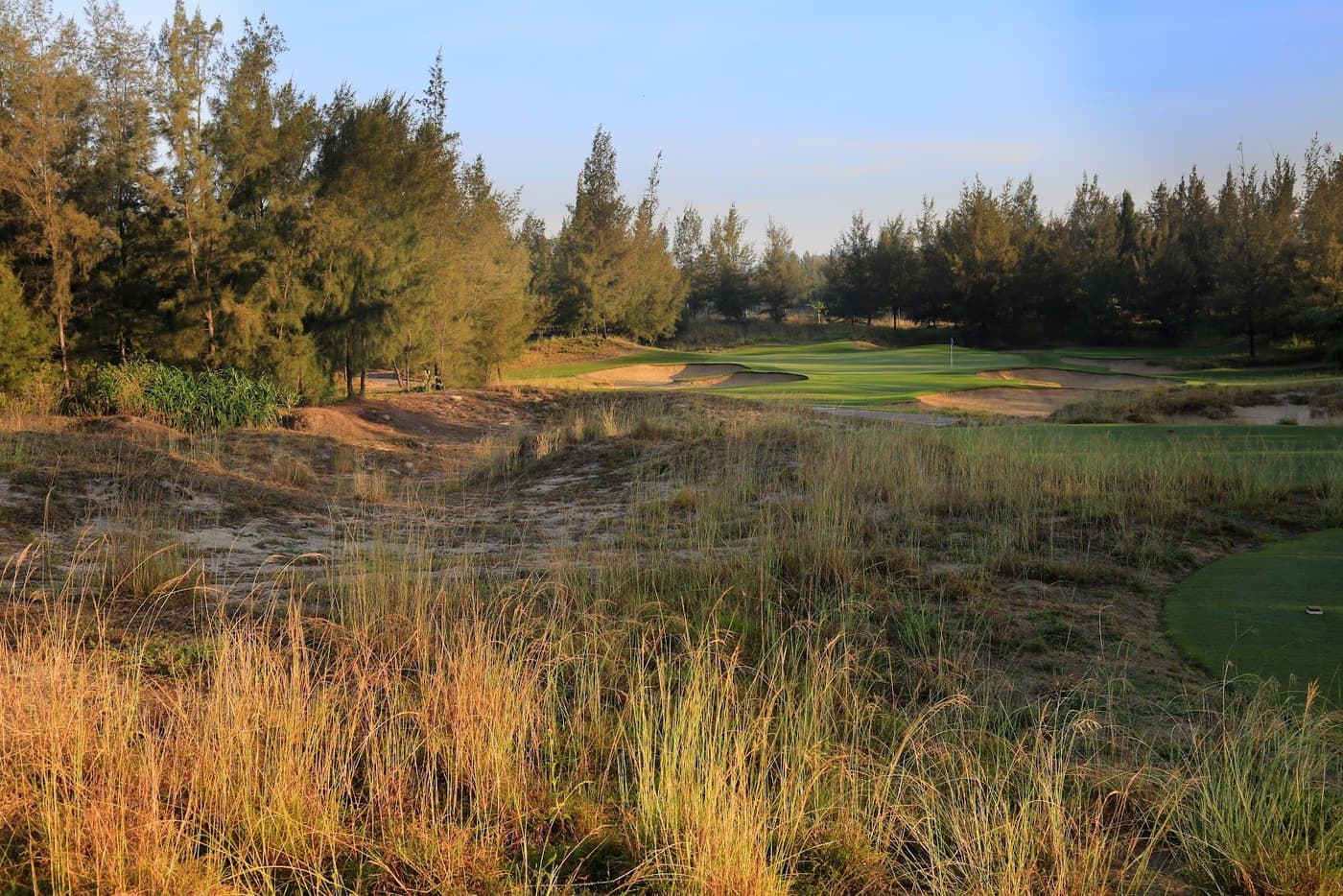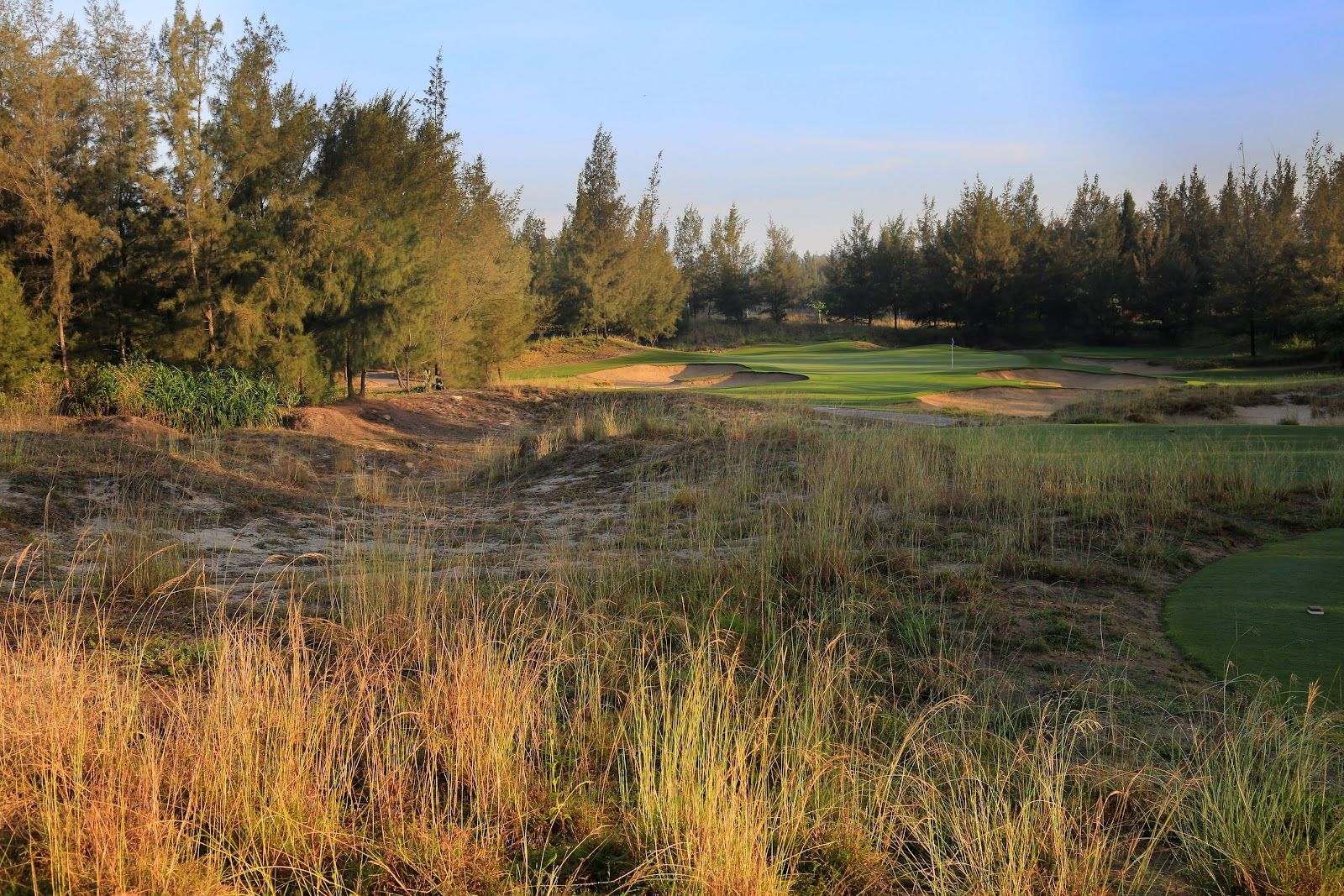
- AddressX7HG+JMW, Trường Sa, Hoà Hải, Ngũ Hành Sơn, Đà Nẵng 550000, Vietnam
Developed by VinaCapital and designed by Greg Norman and lead architect Harley Kruse, the Dunes course debuted in 2010, the first of two 18-hole championship layouts planned for Danang Golf Club, which is now part of the BRG Group.
The sandy soiled fairways on the Dunes course measure a total of 7,160 yards from the Shark tees and they lie on Vietnam’s central coast, next to My Khe Beach.
Highlight holes here include strong back-to-back par fives at the 4th and 5th and another long par five at the 10th that winds through dunes in the direction of the Marble Mountains. The 148-yard 16th is recognised as the signature hole, playing to a slightly raised green that’s framed by the East Sea and Cham Islands.
The Montgomerie Links course is located on an adjacent site to the Dunes fairways and both facilities are now being marketed, along with the new Nick Faldo design at Laguna Lang Co to the north of Danang, as must-play venues on the new Golf Coast Vietnam.
Top-flight tournament playing days of Norman, Montgomerie and Faldo are virtually over, but all three golfing greats are still big draws when it comes to attracting golfing visitors to Vietnam.
We almost forgot to mention the greatest golfer of them all, Jack Nicklaus. In 2018, the first nine holes of a new NIcklaus Design debuted at the BRG Da Nang Resort. The second nine opened in May 2020. Both courses are (unimaginatively) named after their architects. We lament the loss of the "Dunes" moniker... but we'll get over it. Eventually.
The following edited extract by Harley Kruse is from Volume Six of Golf Architecture: A Worldwide Perspective. Reproduced with kind permission. To obtain a copy of the book, email Paul Daley at fswing@bigpond.net.au.
“This fantastic site is just down the beach, the famous China Beach, from where the US Marine landed and set up what was to be the main air-force base for the battle with the north. What I came to see was a gently rolling sand-dune site that stretches from the beach inland, with the classic situation of an inland estuary running parallel to the coast. The dry sand dunes, sparse with grasses, exposed sand and lightly wooded with casuarina pines, stretch inland for about a kilometre before abruptly dropping down into the seasonal flood plain.
Routing the golf courses had its challenges, underpinned by one major consideration: to balance combining two golf courses with the residential, commercial and hotel/resort needs sought by the development company. In laying out the thirty-six holes, we were aided by the available golfing land conveniently dividing itself into two distinct landforms: between the dunes, and the non-dunal parts. This would lead to the building of two singular courses: a highly natural course on the dunes land, and a manufactured course on the flood plain.
Vigorously, we pursued three elements for the Dunes course: broad scale; openness; wind flow. By and large, the construction process was straightforward. Labour, one excavator, a couple of dozers and a tractor-mounted smudge-frame accomplished the work.
One of the highlights of the course proved to be the turf selection: This course is very much ribbons of manufactured turf through a wild and sandy natural landscape. An Indonesian Bermuda grass called Evergreen was selected for the tees and fairways. The tightness and firmness of this grass does much to promote a firm and fast-rolling surface; just what we were looking for.
The contrast between fairway and rough is striking. Fairways are generous in width, to accommodate the windy conditions, and to promote strategic angles without the constant risk of losing a lost ball. In fact, the open sandy rough (as it is to be maintained) makes it relatively easy to find a stray ball. The incidence of lost balls around this course is minimal. That is, unless a golfer tops a shot into one of the two small bodies of water that have to be played across.”
Course Reviews
Leave a Review
This course has not been reviewed.
If you have played this course, consider .
Thanks for the review
Your review has been successfully submitted and will be reviewed for approval.
Course Reviewed
You’ve already submitted a review for this course.
Course Architect
View All
Greg Norman Golf Course Design was established in 1987 and in three decades since then, the company has worked on more than a hundred projects across thirty-four countries in six continents.


